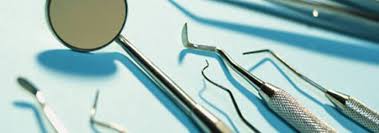Alzheimer’s and Parkinson’s Disease
Ehlers-Danlos Syndrome and Oral Manifestations.
Ehlers-Danlos Syndrome is a group of disorders which affect connective tissue of skin, bones, muscles and other organs. The syndrome is passed by genes from parents to their children. There are six types of EDS: classical, hypermobility, vascular, kyphoscoliosis, arthrochalasia and dermatosparaxis. The types of EDS vary from mild (loose joints or easily stretched skin) to severe life-threatening complications (rapture of arteries and hollow organs). Etiology Ehlers-Danlos Syndrome is caused by genetic mutation resulting in abnormal collagen production. Clinical presentation of EDS: Loose joints, skin hyperelasticity, easy bruising, weak tissue and fragile bones, scoliosis, back pains, joint pain and dislocation, vision problems. Extraoral findings can be such as scars on the chin and forehead, TMJ problems, hupertelorism, curved nose and unusually hyperelastic skin. Intraoral findings are fragile mucosa and gingiva that are easily tear when touched, difficult to control bleeding after surgical procedures. The most significant oral finding is an early onset of periodontitis that leads to premature loss of teeth. Hypoplasia of enamel is common in many patients, microdontia and deep fissures on molars are also present in many patients. Patients with EDS have abnormally long tongue(patients are able to touch the tip of their nose with their tongue) and vaulted palate. The symptoms are increasing with age and are more severe in older people. The Ehlers-Danlos syndrome is equally presented in both sexes, though some forms of EDS is more predominate in women and seen more in white people. This syndrome is usually diagnosed in early childhood. The Ehlers-Danlos syndrome is diagnosed by clinical presentations and family history. In most cases skin biopsy can be used not used as a definitive diagnose. Skin biopsy shows deformity in collagen that looks like cauliflower. This type of biopsy is not accurate and genetic testing is used in conjunction. Radiographic examination also can be helpful in diagnoses of EDS. Pulp stones and very short and deformed roots are the most common features that show up on x-rays. There is no cure for Ehlers-Danlos syndrome. In many cases physical therapy may be helpful to cease some symptom of EDS. Skin protection and thorough wound care is needed. Genetic counseling is very important and recommended. Prognoses of EDS depend on the type of Ehlers-Danlos syndrome. All types of this syndrome are life threatening, but many people diagnosed with it still manage to live normal life. EDS is a lifelong condition. There is no specific treatment for syndrome. Management of pain and physical therapy is the main factors in relieving discomfort for patients suffering from EDS. In most cases the Ehlers-Danlos syndrome can manifest in oral cavity. Oral examination is very important and helps to diagnose Ehlers-Danlos syndrome. The dental team is the first to see any changes in tissue and TMJ problems and help in diagnosis and referring patient to the genetic counseling and other specialists. Precautions must be taken when providing dental care to patients with Ehlers-Danlos syndrome. Dental team should consider very short duration of appointments and avoid keeping patients with open mouth for long period of time to avoid TMJ problems. Light strokes of instrumentation needed to avoid tissue trauma and therefore eliminate long healing process. If trauma should occur, meticulous care of wound needed.
1. Izabella Deren-Wagemann, Malgorzata Kuliszkiewicz-Janus. 2010 “Ehlers-Danlos Syndrome” http://www.advances.am.wroc.pl/pdf/1253.pdf
2. Eric D. Shirley, Marlene DeMaio. 2012 “Ehlers-Danlos Syndrome” http://www.ncbi.nlm.nih.gov/pmc/articles/PMC3435946/



